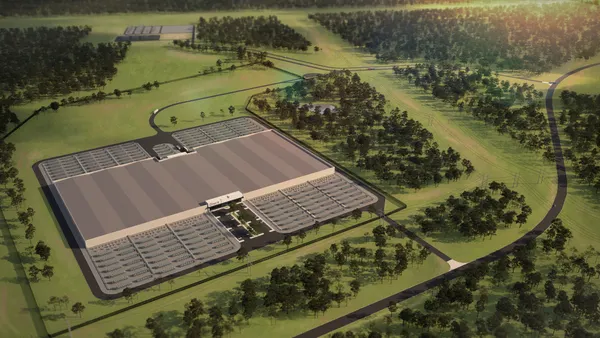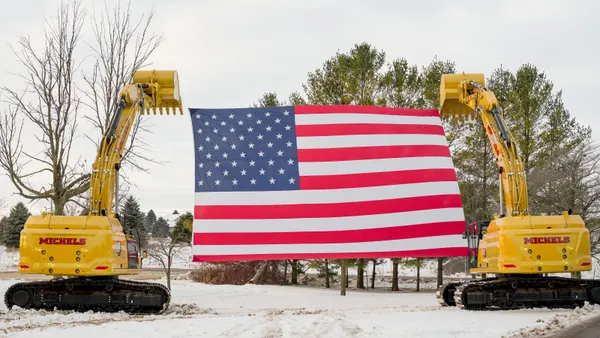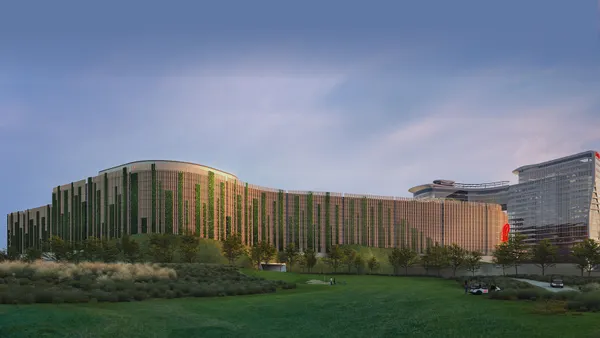Dive Brief:
-
Researchers at the Massachusetts Institute of Technology have developed a programmable 3-D printing robotic arm for large-scale building applications of up to 2,786 cubic meters, IEEE Spectrum reported.
-
The mobile Digital Construction Platform is a project of the research-intensive MIT Media Lab. It has two arms — one for large, sweeping movements and the other for detail work — which together create a mechanical take on a human. A spray device at the end of the small arm extrudes a liquid polyurethane foam, which dries quickly and can be applied to formwork.
-
Still in its early stages of development, the unit is powered by energy generated from connected solar panels and stored in an integrated battery.
Insight:
The MIT Media Lab is known for research projects that bend the rules of construction to emulate the doings of nature while testing the limits of existing technology — for example, the group has developed a dynamic display surface that reacts to motion nearby, a wall system that can move in response to environmental conditions and even 3-D printed glass.
They’re not alone in exploring ways to bring biological behaviors into the built space. For example, researchers at the University of Stuttgart, in Germany, recently used a robotic arm to extrude a thin, carbon fiber-reinforced shell covered in ETFE. The biomimetic process mirrored the way a certain kind of water spider weaves its web, Architect explains.
That project harkens back to a 2013 effort by the Media Lab to create an architectural pavilion that mixes man-made and natural fabrication techniques. The Silk Pavilion features a silk-thread frame woven by a robotic arm. Upon its completion, the research team placed 6,500 caterpillars on the structure, who filled in the gaps — more or less — with their own silk threads.
Mobile 3-D printing applications, specifically, bring such research out of the lab and into the field. However, in the near term at least, the technology is less likely to be used to create entire structures but rather components, such as formwork (in the case of a DCP pilot project), wall systems and even custom joints.













